Our capital is a far cry from hot, bustling Kuala Lumpur, so why is this freezing city full of excellent Malaysian cuisine?
My dad once told me that there are more Malaysian restaurants in Wellington per square kilometres than there are back in Malaysia. He was completely wrong, of course, but for a minute there I was definitely convinced. Wellington has so. Many. Malaysian restaurants, it’s almost unbelievable.
There are fourteen in the CBD alone, and that’s only counting the Malaysian Malaysian eateries. So many of Wellington’s iconic Asian staples serve Malaysian-esque dishes that it’s sometimes hard to differentiate. One of my favourite laksas is from Yum Yum House in Tawa, for example, and that’s run by a Cantonese family.
Widen the net a little, and you’ll still find Malaysian restaurants dotted throughout Wellington’s further-flung suburbs. Upesh Kitchen in Kelburn, the legendary Kanama Kopi Kadai in Kilbirnie, Muthu’s South Indian & Malaysian in Strathmore Park – if flavour-laden cuisine and chaotic decor is what you’re after, you’re pretty much covered throughout the region.
But why are there so many of these restaurants? What is it about Wellington that inspires such a high concentration of the best cuisine in the world? Wellington as a city is intensely cool (figuratively and literally), but it’s a far cry from its hot, humid, highly international Malaysian counterpart, Kuala Lumpur. Why have so many chosen this freezing city as their home?
The answer is as complicated and varied as the people themselves, and no one explanation can fully account for the top of Cuba Street becoming a default Little Malaysia. Instead, it’s a story bound up in the history of Aotearoa’s immigration, of Malaysian higher education and opportunity, and of course, the food that unites us all.
As with all immigrant communities, there’s no single reason Malaysians decide to call New Zealand home. But at a macro level, there are trends; the two biggest being higher education and the tried-and-true better opportunities.
Malaysia is actually a complicated mix of three different ethnic groups: the bumiputera (69.7%), consisting of Malays and other indigenous people, Malaysian Chinese (24.6%), and Malaysian Indians (6.6%). It’s a true melting pot where cultures meet and mingle, but they don’t always easily mix. Each group has their own religions, values, and practices, and this has caused tension in the past.
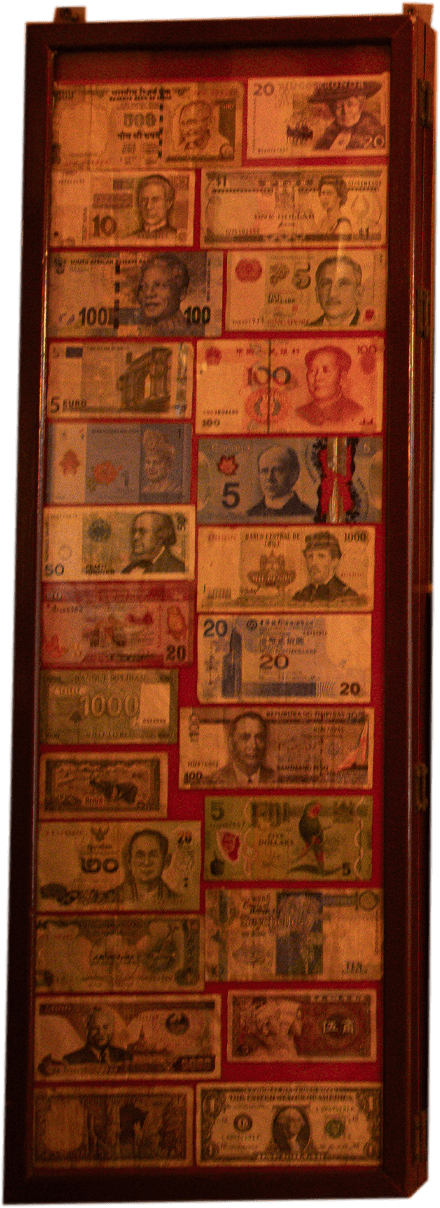
In 1969, Malaysia endured the Race Riots, a four-day marathon of violence, looting, and burning. It was spurred by multiple power disparities between the races – at the time, the poverty rate for bumiputera was 65%, in contrast with 39% for Indians and 26% for Chinese. The Malays strongly felt this was unfair. But they held the majority of the political power, and the Chinese, supported by some in the Indian community, wanted political reform. Sides were drawn firmly along ethnic lines. My mother was nine years old at the time: she remembers hearing the curfew announced as police drove down the street, her father quickly pulling her inside. There were 600 deaths, and it changed the country forever.
A New Economic Policy (NEP) was drawn up, designed to be a way forward for all. In an effort to encourage economic equality, bumiputera were subsequently given preferential admission to Malaysian universities. The theory was that better access to higher education would help lift their community out of poverty. But there was much resentment about this policy, as it made it harder for other ethnicities to gain degrees locally. As a result, more families began sending their children overseas to study.
This is where Aotearoa enters the picture. Students had been coming to New Zealand since the 1950s, in part because of the Colombo Plan, a program for cooperative economic and social development in Asia and the Pacific. Scholarships were made available through the plan for international study – but the rate at which Malaysian students came to Aotearoa was accelerated by the NEP. By 1976, south-east Asian students (as they were recorded by the government) made up around 70% of all international students in Aotearoa.
Numbers continued to surge until the 2000s, when Malaysia dropped the policy of preferential placements for bumiputera. But by then, New Zealand was well established as a travel destination for higher education. To this day, all the major universities have strong Malaysian attendance and communities. “We have a Malaysian student working here, and she will recommend her friends to come work when she has finished studying,” says Alice Choo, whose family owns Satay Malaysia at the top of Cuba Street. “They have a new batch coming in every year, so there’s always recommendations.”
The other half of the equation is Aotearoa’s own policies. Students aside, in the early 20th century, immigration from Asia was actively discouraged. A 1953 memorandum from the Department of External Affairs even goes so far as to declare: “Our immigration is based firmly on the principle that we are and intend to remain a country of European development. It is inevitably discriminatory against Asians – indeed against all persons who are not wholly of European race and colour.”
But this attitude gradually changed, and by the 1970s, was no longer tenable. The prime minister at the time, Norman Kirk, was convinced that the economic future of Aotearoa lay in Asia and the Pacific. His government began reviewing and changing immigration settings, so immigrants of all backgrounds would be on more equal footing. (This is also the prime minister who initiated the Dawn Raids. So…)
A decade later, the Immigration Act of 1987 effectively stopped the prioritisation of British and other European immigrants, and allowed immigrants from all countries to be admitted to New Zealand if they met certain requirements. There were three main categories for selection:
1. Skills and business: priority was given to immigrants who had needed skills. Business immigrants were expected to transfer at least $150,000 NZD to New Zealand.
2. Family: immigrants with no immediate family members elsewhere were allowed to join family in Aotearoa.
3. Humanitarian: for people suffering emotional or physical harm in their country of residence. This category accounted for around 10% of all immigration.
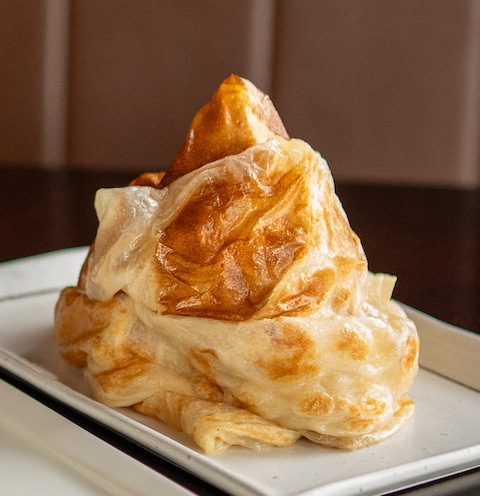
Under these more relaxed laws, Malaysians could follow family to Aotearoa, set up businesses – and start serving food.
Today, the New Zealand Malaysian population is difficult to quantify. As of 2018, there are 17,464 Malaysian-born New Zealand residents, but this doesn’t take into account second (or more) generation kids. Ethnic data from the census shows 4,866 Malaysian Chinese, 3,729 Malays, and just 474 Malaysian Indians – a definite undercount. The census doesn’t really cater to more complicated identities, unless you tick “other” and write the full answer in yourself. A quick poll of my cousins, for example, showed that we mostly just mark ourselves “Indian”.
For the official data we do have, Wellington is the second-most popular region after Auckland for Malays and Malaysian Indians, third for Malaysian Chinese after Canterbury. “I don’t want to live in such a big city, where you have to travel around a lot,” says Uvanesan Narayanasamy, the current owner of Rasa Malaysia. “Since I’ve moved here, I did travel and all of that, but I prefer to be in Wellington. It’s much more convenient.”

There were differences between the ethnic communities in Malaysia, yes. But one of the many things they held in common – and one of the biggest reasons a trip to Malaysia should be on everyone’s bucket list – is the food. Malaysian food is, in my definitely biased opinion, the best food in the world. But, you could argue, it has to be: it combines the best of the best, and it’s been doing so for a very long time.
Firstly, there are the Chinese and Indian migrants, who have been trading in the region for thousands of years. Then, there are many nearby countries – Indonesia, Thailand, Vietnam, Cambodia, Japan, the Philippines – which have all exerted influence in certain dishes, flavours, textures, and techniques.
Take murtabak, a parcel made of roti and stuffed with meat mince, potatoes, egg, onion, curry. It’s commonly sold by Malay and Malaysian Indian muslims, but it actually originates in Yemen (as mottabaq). Or tom yum soup: you’ll find it in so many Malaysian restaurants around the country, but it’s a very Thai dish.
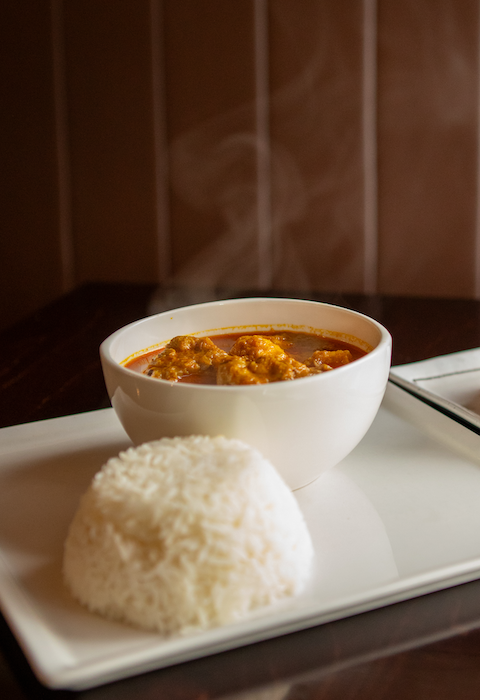
Then there’s laksa – the ultimate flavour bomb, the iconic spicy soup with noodles (wheat, egg, or vermicelli), coconut milk, fried tofu puffs, boiled eggs, seafood, meat, beans, beansprouts, fish balls and fish cake. It’s almost infinitely customisable and the ultimate comfort food; I make (or order) it every time I fall sick. No one’s really sure where the name came from, but it originated with the Peranakan Chinese community, who are of both Malay and Chinese origin. You can taste the different influences in the Indian-esque spice kick, the subtle Chinese flavours, the Malay-style heartiness.
Finally, Malaysian roti canai, a soft, buttery, flakey flatbread that sops up curries and flavours like nobody’s business. Thought to have been introduced and developed by Indian muslims, it was just voted as the second best dish in the world by TasteAtlas – so the claim that Malaysian food tops the lot isn’t without strong, international support.
And Malaysia really is all about the food. It’s the first thing my brothers and I discuss when we get off the plane: how soon can we eat?
Everywhere you go, you’ll find food carts on the side of the road, sometimes offering just one single dish that they’ve perfected over years – like nasi lemak, a coconut-milk rice dish with anchovy sambal and crunchy fried peanuts. For breakfast, my aunt would pick up enough for all of us from her local hawker and bring it home wrapped in newspaper and leaves.
In food courts, vendors come together to offer their specialties: stalls dedicated to every variation of laksa, every kind of Chinese-style roast meat, all styles of flavourful claypot rice, sizzling hot plates, and that one guy who just does the drinks (bless him).
Restaurants tend to be split by ethnicity, so you can get the best Chinese, the best Indian, the best Malay food, all in one place. Sometimes they’re split by food type, like the all-you-can-eat banana leaf restaurants, for as much Indian curry, sambal, raita, and fried chicken as you can handle. And the locals all know all the good spots for all kinds of food – if you want, say, the best bak kut teh (juicy pork ribs in a beautifully flavoured broth) in Klang, just ask my uncle.
You’re also able to buy food any time of the day or night – I’ve had my best conversations with my cousins while eating maggi mee goreng at 3am (maggi mee goreng: literally 2-minute noodles dry fried with proteins and veggies, in a delicious savoury/sweet sauce). You can always find a mamak stall, a kind of Indian-run roadside restaurant, open when you need it. During the week of my cousin’s wedding, he made sure to sneak us all (at, like, 10pm) to the best hotpot truck in town.
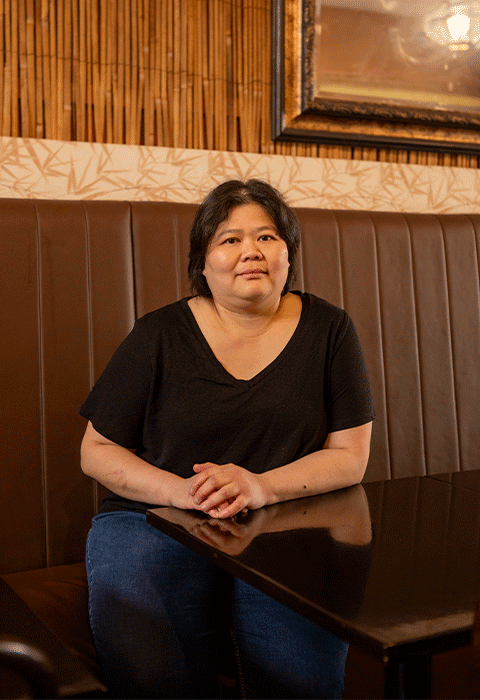
Best of all, Malaysian food is about evolving, experimenting, mixing flavours and influences and putting your stamp on old favourites. Each region has their specialties, each region does it all differently, and what’s “authentic” will differ based on where you are, who’s cooking it, and how their family does it. “Maybe you can increase or decrease ingredients to bring out the flavour that your family likes,” says Choo from Satay Malaysia. “You cook for your family first. As long as the flavour is there, the ingredients are there, and we are from Malaysia, I would say that it’s authentic Malaysian food.”
As far as anyone can remember, the first big Malaysian mainstay was an Allen Street legend named Satay Kampong. It opened in the early 90s, trading for 20 years before folding in 2012 – before I moved to Wellington, but just in time for one last tonally strange David Burton review, where he plays hype man to Malaysia’s famous Chef Wan rather than actually describing the food (c’mon David, one New Zealander to another, is the rendang fire or not?).
But although Satay Kampong might have been lonely in the beginning, it definitely wasn’t by the end. “I used to work at Istana Malaysia,” says Narayanasamy (Istana Malaysia is now the oldest Malaysian restaurant in Wellington). “Satay Kampong and Istana Malaysian were very good friends.”
In his 18 years in Wellington, Narayanasamy has seen Malaysian restaurants rise and fall (like Roti Canai on Victoria Street, which disappeared one day without a trace. I searched for it for years before I found out it had closed down). Businesses are hard to sustain, he says.
But even as Malaysian restaurants go out of business, they provide a stepping stone for up-and-coming restaurateurs to establish themselves in Wellington. There’s no formal community as such, but there’s definitely influence – a number of junior staff at existing establishments end up taking over the business, buying another existing restaurant, or starting their own.
“I used to work in a Malaysian catering company called Kopi catering,” Narayanasamy tells me. “I started as a roti canai chef, but then the business was sold to Wishbone. My employer’s brother owned Rasa, and asked me to come here, because they need a chef. So I started here straight after.”
Rasa is one of, if not the most, popular South Indian/Malaysian restaurants in the city. It also boasts the best interior decoration of the lot: an eclectic mix of North Indian puppets, mediterranean-esque pickles, and African drums, but it does look good. For one, unlike a surprising number of other Malaysian places, the walls aren’t bright green.
Similarly, when Choo’s father first immigrated to Wellington, he worked in Satay Kingdom on Leftbank. A few years later, in 2006, he started his own restaurant on Cuba street – Satay Palace, a homely-feeling restaurant, with a small kitchen and bathrooms that look like they were recently raided. Then, on the recommendation of a friend, he bought the empty premises up the road, and opened the licensed BYO, Satay Malaysia.
Choo now runs Satay Malaysia, alongside her husband Eddy. They boast slightly mismatched furnishings, dim lighting, and fun atmospheric music – very cosy and welcoming. Choo seemed secretly very chuffed when her restaurant’s roti canai and curry was ranked #1 by The Spinoff, while her father’s came in at #5.

Today’s Malaysian scene features more Malaysian restaurants than you could comfortably sample in a week (trust me, I should know). Many are beloved Wellington institutions that have been going strong for more than a decade now, and new ones still pop up from time to time.
All these restaurants offer a huge variety of dishes, showcasing a broad base of Malaysian cuisine – and unlike many stalls and restaurants back home, they don’t stick to dishes from their own ethnic heritage.
For example, the Long Bar on Brandon Street is a staple for the lunchtime corporate crowd. For some reason, Thursdays are their busiest days: it’s so bustling with suits and skirts you can barely hear yourself think. I believe it’s Malaysian Chinese owned, but their nasi lemak (traditionally a Malay dish) is straight fire.
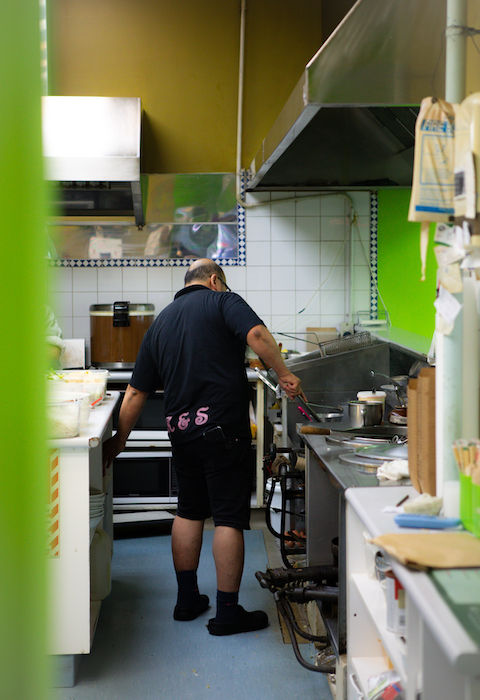
There’s also Aunty Mena’s, decorated with tree decals like the dining hall of a school camp. An entirely vegan restaurant, they completely changed my mind on Malaysian food needing meat. Or at the very least, meat products. A good option if you’re craving laksa sans shrimp paste.
Some people might consider this branching out a bad thing, like Malaysia’s Chef Wan, who visited New Zealand in 2012. “There’s too much diversity in Malaysia,” he grumbled, suggesting each ethnic community should stick to their own food.
But at its essence, Malaysian cuisine is all about the different influences – that’s where the magic happens. The food at each restaurant is a real reflection of the people who run it.
Other iconic spots include Satay Kingdom on Leftbank, beloved for their incredibly cheap roti and curry combo. They have outdoor seating and fluorescent lighting that makes dinner infinitely instagrammable. There’s also KK Malaysia on Ghuznee, which seats more people than you would guess if you just looked through the windows. It’s beloved specifically by Grant Robertson, who was interviewed there not once but twice. He really loves the beef rendang (a dry curry that’s spicy, sweet, coconutty, with tender meat and rich flavours and textures).
Beef rendang is also popular at Satay Malaysia. Choo believes this is because some Indian Malaysian restaurants don’t cook beef. Satay Malaysia itself doesn’t serve pork, which is a big part of many Malaysian Chinese dishes. And when I asked why Aunty Mena’s is vegetarian, the owner summed it up in one quick word: “Buddhism.”
I’d be remiss not to mention Little Penang, probably the most written-about restaurant of the lot. The owner, Tee Phee, is a big advocate for Penang food (of course) and the Hokkien language. Their char kuey teow (a famous Penang dish of wok-fried flat noodles) is probably my favourite in the city.
Choo says that her friendships across cultures inspire her to try different spices, different techniques. Even though she’s from a foodie family, with her maternal grandparents running a small-town restaurant back home, some of her menu is just about trial and error.
“Sometimes Indians will use ingredients that the Chinese don’t use,” says Choo. “So when we hear about a different method, we can try it and see whether it’s good for us, for that dish.”
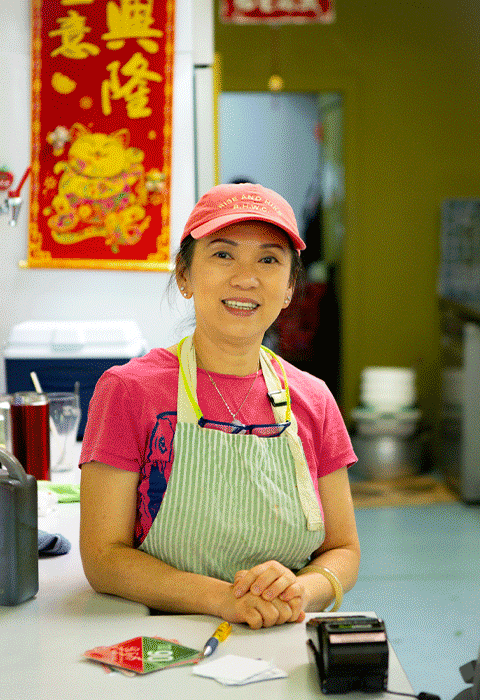
Sarah Leong, co-owner of R&S Satay Noodle House, agrees – trial and error is in the best Malaysian tradition. Anyone can open a stall back home with no skill, she points out. You can pick curry leaves and lemongrass from the side of the road.
Here, you can only get these ingredients frozen and imported – it can taste different. You have to learn as you go. That’s what she did. Now her aunty calls her asking for her recipes. “Sometimes people ask me, is your curry laksa … from north or south? I say, ‘It’s from R&S,’” she tells me. “It’s my own recipe, and the flavours from our kitchen. Just give it a try.”
If there was a learning curve as Wellington’s Malaysian restaurateurs began, they’ve definitely found their places now. And because so many restaurants have been running for so many years, there’s been this incredible trend of incidental specialisation. Everyone has their own ideas about their signature dishes, but we’re reaching the point where locals know where to go for certain foods.
For example, after being ranked Wellington’s #1 by The Spinoff, Satay Malaysia became the place for roti canai and chicken curry (Eddy makes them by hand every day – for six months after they were crowned, they kept running out). For the best dosai and goat curry, you need to visit Rasa Malaysia. For nasi lemak, it’s Little Penang or the Long Bar. Satay Kingdom’s best dish is their nyonya curry, and the best Hainanese chicken rice in the city is from R&S Satay Noodle House. (Seriously, that chicken rice got me through my degree almost single-handedly.)
In Auckland, where I grew up, my family and I would go to our favourite Malaysian restaurants for any and everything. But in Wellington, we know the best spots for char kuey teow, for mee goreng, for curry laksa.
Just like we would back home.

It goes without saying that the last few years have been challenging. For Satay Malaysia, it’s been a double whammy. First, the restaurant needed earthquake strengthening. “We were closed for 14 months,” Choo told me, during which time she and her husband went to help out her dad at Satay Palace. Running two restaurants meant long hours, six days a week for the whole family – but with just one open, everyone could take a break. When Satay Malaysia opened again, loyal customers started trickling back.
Then, the pandemic hit. Restaurants were required to shut down shop, supported by government subsidies (Narayanasamy leaned on these to keep Rasa going). By the time restrictions were lifted, everyone was more than ready to get back to work. But some were now operating in a changed environment. “A lot of offices are moving away from here, or they’ll work from home,” Choo says. “So lunchtime can be very quiet. Sometimes it’s busy, then the next day it’ll be quiet, and then busy, and then quiet.”
Business is slower for Leong as well. “If you’re busy you need more staff working right? But right now, during the weekday, there’s only three of us,” she says. “There used to be five people working on weekdays. So it’s a big difference. It’ll pick up a bit on the weekend, the week is pretty slow.”
The cost of living is also a concern: people are spending less and suppliers are upping their prices. Many ingredients can be bought from local markets, but some have to be imported – and it’s all getting more expensive. “The cost of living crisis is very difficult,” says Leong. “Every year, the minimum wage goes up by a little bit, suppliers put their prices up – of course our menu prices have to go up. It’s not quite balancing.”
As for the Wellington City Council’s recent proposal to scrap 20 car parks from Cuba street in favour of widened footpaths, Leong and Choo are convinced it will negatively impact their businesses. They feel their customers, especially the elderly, won’t come if there isn’t easy car access. They’re both firmly against it, and proudly display posters for Karl Tiefenbacher’s pro-carpark campaign in their front windows.
Narayanasamy’s against getting rid of the car parks as well, but he feels people will probably come to his restaurant regardless. “Most of my customers are local Wellingtonians – I think they would somehow still manage to get places,” he says. “But removing the parking will definitely impact the business, I won’t deny that.”
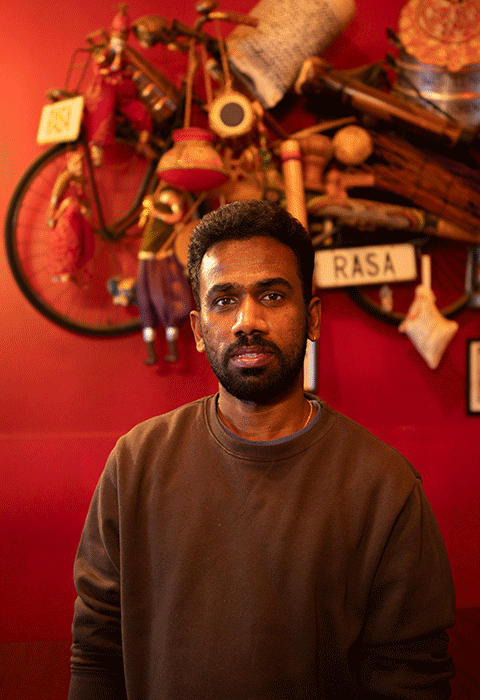
Despite all this, all three restaurateurs are feeling positive about the future. When asked, Choo, Narayanasamy, and Leong all agreed that their restaurants aren’t going anywhere.
“I think I’ve kept up Rasa’s ex-owner’s legacy for the past eight years,” says Narayanasamy. “So I hope someone will keep up my legacy after I’m finished running the business. Because it’s a very good business in Wellington, and a very popular restaurant amongst Wellingtonians.”
The story of Wellington’s Malaysian restaurants — much like the story of Malaysia – is one of resilience. (You’d have to be resilient, to weather as many student BYOs as Oriental Kingdom has.)
But it’s also a story about opportunity, and family. For the most part, these are family-owned restaurants, staffed by whānau, friends, and other immigrants from the Asian diaspora. They’ve made Wellington home, and are now extending their hospitality and care to those who come after them.
Leong followed her uncle to Aotearoa decades ago, just for fun – but she decided to stay and set up her life here in Wellington. During our interview, she introduced me to her granddaughter, a cute little girl of primary-school age dressed completely in pink (including the bobbles on her beanie), who bounced through after school. She was shy when she spoke to me, but looked so at home next to her grandmother. She’s part of a new generation who’ll grow up in family restaurants.
Choo says her father first came here for his health: the pressure of working life in Malaysia had started to wear him down. After living for some time in New Zealand, his health has now improved (despite owning and running two restaurants). He’s the reason the family have all settled in Wellington; Choo’s mother joined him from Malaysia to help him run that first business, and now their daughter is serving some of the best Malaysian food in the city.
As for Choo’s husband Eddy, no one has ever made me feel more comfortable during an interview. I’d actually met him a few weeks earlier, when I’d come in to ask Choo for an interview, explaining I was the one who’d ranked their roti canai #1. He came out from where he was working in the kitchen just to shake my hand.
When I came back for the full interview, Eddy gently interrupted more than once to ask me if I’d like something to eat. No? Was I sure? He could make me something, it was no trouble. I could try something new, something I hadn’t tried before. I really didn’t want to say yes. We were in the middle of discussing the cost of living crisis and all the other challenges to the business.
“He asked me why you didn’t eat last time,” Choo laughed. Eddy just smiled and kept insisting, to the point where I felt more guilty turning him down than accepting the food. In the end, I promised I’d be back for dinner. He could make me anything he’d like.
And just like that, I was home too.
This feature was made with the support of Asia New Zealand Foundation.